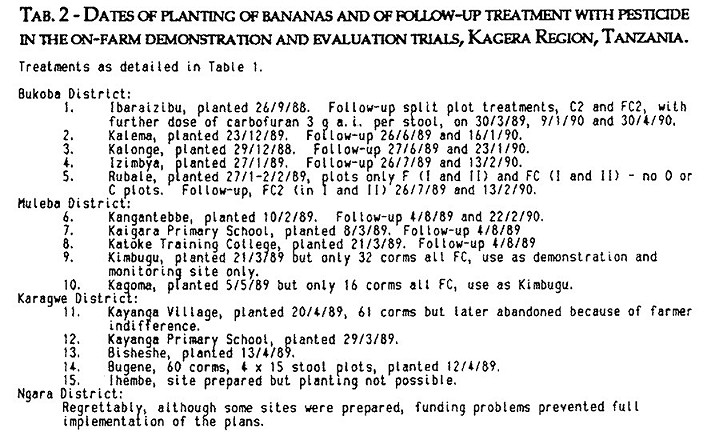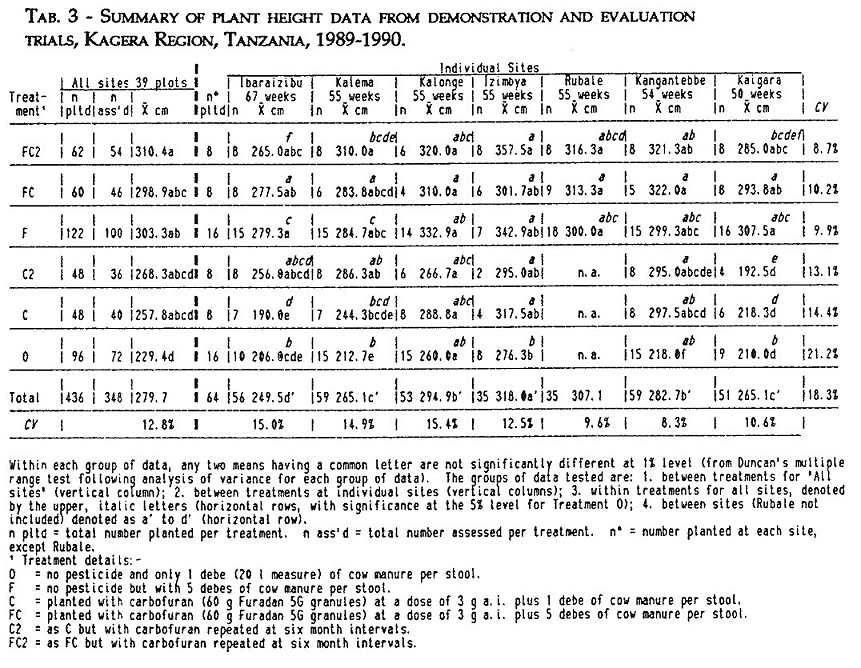The Bananas of Upland East Africa - FIELD TRIALS PROGRESS AND RESULTS UP TO MAY 1990 |
Table 2 summarises the dates of planting and of the follow-up pesticide treatments. The germination at most sites was over 85%, with lower numbers germinating in the unmanured plots. At Kalema, for example, 43 days after planting 41 of 64 had germinated, with 15 of 16 in the FC plot. With the passage of time clear visual differences between plant vigour were seen. The plots in order of plant quality were FC, F and C, and O. At around six months after planting the numbers of suckers being produced were highest in the FC plots.

Table 3 shows the mean plant height in each plot at eight of the sites when visited around one year after planting. By this time the FC and C plots had been subdivided, with repeat treatment with carbofuran in half of each plot, these new subplots being known as FC2 and C2. The number of stools which had germinated in each plot also are shown. Analyses of variance (ANOVAs) were undertaken, followed by a Duncan's Multiple Range Test (DMRT) for each set of results where there were significant differences between the mean heights. The groups of data analysed were: between treatments at all sites; between means of all plants at each site. As a simple indicator of the general success of the trials, the coefficients of variation (CV in almost all the groups of data were quite low (8.3 % to 15.4%), the exception being the group of no pesticide, low manure treatments (treatment O, 21.2%).

| ©2000 - Brian Taylor CBiol FIBiol
FRES 11, Grazingfield, Wilford, Nottingham, NG11 7FN, U.K. Visiting Academic in the Department of Life Science, University of Nottingham |
href="\bananas2000\results2.htm"